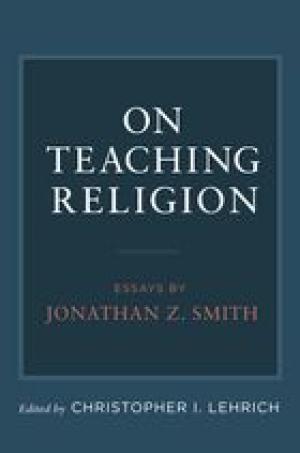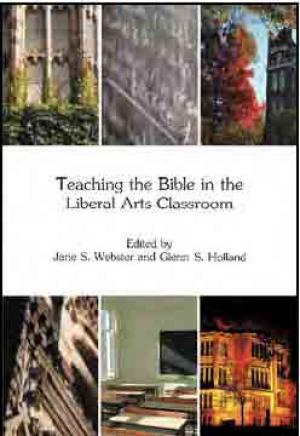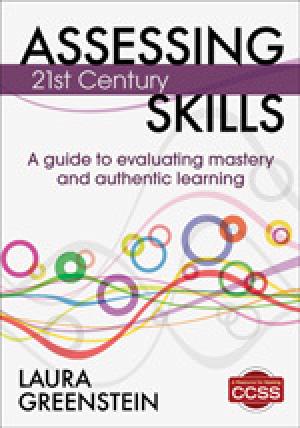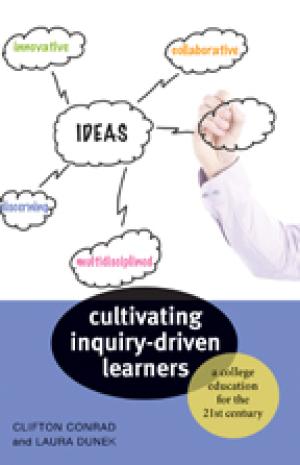Resources
The comeback of the religious studies major and the importance of religious studies in the studies of politics, history and other disciplines.
Diverse teams of faculty and other academic and student affairs professionals from a wide range of institutions has drafted and revised institutional-level rubrics (and related materials) to correspond with the AAC&U "Essential Learning Outcomes." Each VALUE rubric contains the most broadly shared criteria or core characteristics considered to be critical for judging the quality of student work in a particular outcome area, including: intellectual/practical skills (such as critical thinking and communication), personal and social responsibility (such as civic engagement and ethical reasoning), and integrative and applied learning.
An engaging and accessible rumination on the purposes of liberal arts education and how they have been undermined in the past 50 years.
The Association of American colleges and Universities (AAC&U)supports liberal education nationally through publications, meetings, public advocacy and programs. Its web site provides a wealth of resources, position papers, and descriptions of its initiatives. The organization also supports a robust program of publications (periodicals, pamphlets, books), available for a small fee.

This volume collects essays and lectures of renowned scholar of religion Jonathan Z. Smith, many previously published in out-of-the-way periodicals or unavailable in print. For more than thirty years, Jonathan Z. Smith has been perhaps the most important voice of critical reflection within the academic study of religion. His essays are cited constantly, his books used in undergraduate and graduate classes. Smith has also produced a significant corpus of essays and lectures on teaching and on the essential role of academic scholarship on religion in matters of education and public policy. Many of these articles appeared in education journals, which unfortunately most academic scholars do not read; others are collected in specialist volumes of conference proceedings on Judaic Studies, for example. Many were originally delivered as keynote speeches to the AAR and other major scholarly organizations, and although scholars reminisce about hearing Smith deliver them, the works themselves are not readily available. Education is not a side issue for Smith, and his essays continually shed light on fundamental questions. What differentiates college from high school? What are the proper functions of an introductory course? What functions should a department serve in undergraduate and graduate education? How should a major or concentration be conceived--if at all? What roles should the academic guilds play in public discourse on education and on religion? Most importantly, what does it mean to say that one is both a scholar and a teacher, and what responsibilities does this entail? On Teaching Religion collects the best of these essays and lectures into one volume, along with a new essay by Smith. (From the Publisher)
The purpose of this essay is to offer a survey of religious studies capstones from twenty-nine U.S. colleges and universities, to identify the most common frustrations about the capstone, and to observe how departments resolve such frustrations. I conclude that the most successful capstones -- in terms of students’ performance and faculty satisfaction -- are those that are carefully linked to their department’s major curriculum, pedagogies, and staffing, that set out to achieve a reasonable set of objectives, and that are aligned with their institutional mission, culture, and expectations for assessment. Yet, I argue that it is becoming increasingly difficult to design our capstone experiences according to the above principles because of the proliferation of departmental and institutional pressures we presently face. Finally, I offer some guidelines by which we might devise or revise our capstones to alleviate some of the most common pressures.

Teaching biblical studies in the undergraduate liberal arts classroom poses many challenges. Do biblical studies deserve a place at a secular liberal arts college? In church-affiliated colleges, should courses in Bible toe the denominational line? Can we claim that biblical studies advance the goals of liberal education, whatever we might think they are? On a more practical level, how can an instructor engage the attention of students who are taking a course in biblical studies only to fulfill a requirement? How best to begin with students from non-religious backgrounds who begin a course with no real knowledge of the Bible at all? How best to deal with students who already think they know what the Bible is all about, and resist any ideas or approaches that might threaten their ideas? This collection of pedagogical essays reflects the practical experience of instructors who have spent years teaching biblical studies successfully to undergraduates at liberal arts colleges. The essays address both methodological approaches and specific classroom strategies for teaching biblical studies effectively in a way that advances the skills of thinking and expression that are essential to a liberal arts education. The product of several years of conversation among working professors from an array of liberal arts colleges, these essays offer insights and inspiration for biblical studies instructors who work in a very specific and demanding academic environment. (From the Publisher)

The Common Core State Standards clearly define the skills students need for success in college and the 21st century workplace. The question is, how can you measure student mastery of skills like creativity, problem solving, and use of technology? Laura Greenstein demonstrates how teachers can teach and assess 21st century skills using authentic learning experiences and rigorous, varied assessment strategies. Based on the best ideas of renowned experts in education, this book provides a framework and practical ideas for measuring • Thinking skills: critical thinking, problem solving, creativity, and metacognition • Actions: communication, collaboration, digital and technological literacy • Living skills: citizenship, global understanding, leadership, college and career readiness Included are numerous rubrics and checklists, a step-by-step model for developing your own classroom assessments, a lesson planning template, and sample completed lesson plans. Assessing 21st Century Skills gives you the tools and strategies you need to prepare students to succeed in a rapidly changing world. (From the Publisher)

Inquiry-driven learners anticipate, embrace, and adapt to disruptive change. Clifton Conrad and Laura Dunek advance a transformative purpose of a college education. They invite stakeholders from across higher education to engage in vigorous dialogue about the aims of a college education—and how to realize those aims. Increasingly influenced by market forces, many universities employ a default purpose of a college education: preparing students for entry into the workforce. As a result, students remain unprepared for a world in which much of the knowledge they acquire will have a shelf life of only a few years. Cultivating Inquiry-Driven Learners charts a new way forward. It proposes that a college education prepare students to be innovative and adaptable by developing four signature capabilities: core qualities of mind, critical thinking skills, expertise in divergent modes of inquiry, and the capacity to express and communicate ideas. In concert, these capabilities empower students to explore and foster ideas that will prepare them to successfully navigate constant change, capitalize on career opportunities, enrich their personal lives, and thoughtfully engage in public life. This innovative book also explores a wide range of initiatives and practices for educating inquiry-driven learners. Examples illustrate possibilities for developing inquiry-driven learners across the curriculum and are drawn from institutions with remarkably different missions and identities—from research universities to liberal arts colleges. "This book revitalizes the notion of a 'well-rounded' education by describing how inquiry-driven learning is critically important for these times. It is the sort of foundational text that invites discussion and debate and describes with clarity and economy of prose the pressures facing colleges and universities and how they ought to respond."—Matthew Hartley, University of Pennsylvania. (From the Publisher)